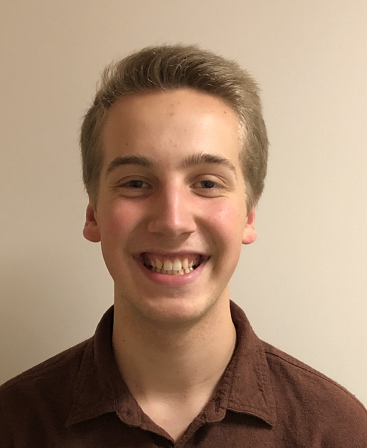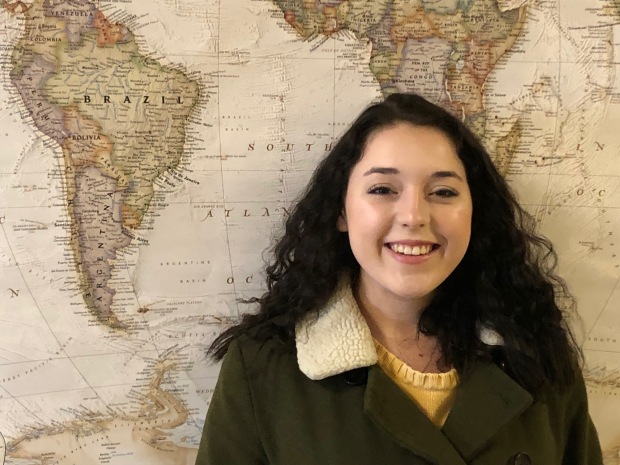Last academic year, Professor Andy Moore obtained a summer research grant from Saint Anselm College’s Center for Ethics in Business and Governance. Moore used part of the grant to pay History major William Small ‘22 a stipend to serve as a research assistant. One Thing after Another asked them about the project on which they worked together.
The blog first asked Professor Moore some questions.
Q: Please tell us about your research topic.
A: Within the past couple of years, I started to notice a public and very distinctive relationship between Protestant evangelicals and the gun rights movement. This project explores that relationship both historically and in its current state. So in a sense, I am exploring the 21st-century culture wars and the nature of the conservative movement now. If we created a Venn diagram of the people I will be studying, there would be considerable overlap between Protestant evangelicals and gun rights supporters. Both groups are politically conservative, both tend to come from rural areas or the South, and both supported Donald Trump by overwhelming majorities in 2016. Beyond simply acknowledging the overlap, however, I hope to tease out some of the theological underpinnings of these evangelicals’ connection to guns and the Second Amendment.
Q: How did a historian come to work with the Center for Ethics in Business and Governance?
A: I have been developing a new course called “Guns in America” that I am teaching for the first time this fall. As part of my interest in guns, I started to notice these examples of Protestant evangelicals closely aligning themselves with gun rights, the National Rifle Association, and defending the Second Amendment. I started to collect news accounts and other sources about this trend, thinking I might come back to it at some point after I finished other projects that I have been working on for a long time.
When the Center for Ethics in Business and Governance (CEBG) announced its summer research grant, I started thinking about the ethical questions inherent in this topic. Because I think this could be a great opportunity to engage in interdisciplinary conversation with another discipline, I reconsidered the project in light of the CEBG’s mission. A good friend who is an ethicist critiqued my original proposal for me, so even in writing the proposal I have engaged in interdisciplinary conversation.
For me, one aspect of the grant that made it attractive was the opportunity to work with a student researcher. Will Small agreed to work with me this summer to track down and analyze sources. Last year, Will had helped me locate primary sources to use in my new course, “Guns in America,” so this gave the chance for us to continue that research and take it in a different direction.
Q: What types of sources were available for this project?
A: Will found a lot of online sources that were relevant. Those include news stories from both Christian and secular publications, as well as blog entries and discussion forums by activists on both sides and by people who have given this issue some theological thought. Also, I visited the Southern Baptist Historical Library and Archives in Nashville, Tennessee. The Southern Baptists are the largest evangelical denomination, and they have leadership that has been increasingly political the past 40 years. There I found official church publications and letters from lay Southern Baptists from all over the country about gun rights and gun control. About 20 years ago, there was a mass church shooting at a Baptist church in Fort Worth, Texas. I found some information about that shooting and its aftermath.
Q: Given the controversial nature of gun rights in the United States, have you envisioned opening up the discussion of them to Saint Anselm students in any way? If so, how?
A: I hope so. The research grant requires a public presentation of the research. I hope that proves to be an opportunity to engage with students—or anyone with an interest in guns and gun-related issue—in a fruitful dialogue about a controversial topic.
Q: Besides the public presentation, what are the goals of this research?
A: I hope that an academic journal article will be the ultimate product of this research. By the end of the year, I expect Will and I to have a serviceable article manuscript that we can begin to shop around to potential journals for feedback and eventual publication.
Next, One Thing after Another turned to Will Small for some questions.
Q: What was your experience doing research over the summer? What skills did you develop?
A: I was allotted approximately 125 hours of work over the summer, so I decided to schedule this number out to encompass the entire season rather than front or back-load it all. I ended up with a routine that involved working two hours a day every week, minus weekends. Towards August, though, I began to work three hours every other day, including weekends, as I felt that it fit my schedule better. I found, as probably is to be expected, that digging up new materials on the topic was more engaging than taking detailed notes on what I had already found. Throughout the project, I was able to develop efficient methods of online research and further my knowledge use of the college’s databases. I was also able to put some analytical thought into action in attempting to figure out how all of these pieces of research fit into the larger narrative of American or evangelical history or culture.
Q: Did anything surprise you during this research?
A: As Professor Moore mentioned, the majority of my research involved finding and taking notes on newspapers or other editorial articles that expressed a Christian perspective on gun rights. Surprisingly, much of what I found from evangelical authors supported a more restricted view of gun rights, especially from the Reverend Robert Schenck, president of the Dietrich Bonhoeffer Institute and a faith consultant for many officials in Washington, D.C. In fact, according to an August 2017 survey by the National Association of Evangelicals (https://www.nae.net/evangelical-leaders-own-guns-but-want-stricter-laws/), although 58% of evangelical leaders live in a home with guns, 55% of them also support stricter gun laws. I was not expecting the sheer volume of pro-gun control (or gun safety, as some prefer to call it) evangelical writings. Additionally, in rifling through public forums, I was a little surprised to find how common concealed carrying in churches is in some places in America. Since I had never come across this phenomenon in my daily life or given it much thought, it was interesting to find a way that others in the country lived differently.



